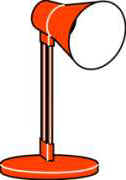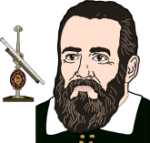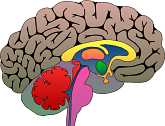|
The Logics |
|
|
|
Aristotle, |
As early as 1951 R. Hubbard published The Logics. These have been called "the axioms of learning" and "the axioms of rational thinking".
First, you may ask, "what are axioms,
be it in Study Technology or in physics?"
Axioms are laws, principles and agreements so fundamental that they cannot be
argued about. They can neither be proven nor disproven. All logical deductions
start from there. If one could think "further down" than them, they
wouldn't be axioms. They are the basic laws and principles we build good science
and knowledge on.
These Logics are not necessarily new. It is an attempt to codify and define how we think when we think rationally. The codification is however a great help to clean house and make this whole field easier to work with. The last Logics (Logic 22-24) do point in a new direction and are new as axioms.
Man's development and control over his environment parallels his ability to think rationally. Logical thinking could be said to be the ability to combine factors into answers. There are some distinct phases in this development.
Primitive logic was one-valued. Everything was assumed to be the product of a divine will, and there was no obligation to decide the rightness or wrongness of anything. Most logic added up merely to the propitiation of the gods.
Aristotle formulated two-valued logic. A thing was either right or wrong. This type of logic has some workability. But it is also the logic used by the reactive mind. Irrational people see things in black-and-white. Things are either perfectly good or terribly bad. No stops in between.
Engineers and scientists developed logic into a sort of three-valued logic which contains the values of right, wrong, and maybe.
From three-valued logic we move forward to the system used in this manual: an infinity valued logic-- a spectrum which moves from infinite wrongness to infinite rightness. This last type of logic had not been codified before 1951. We may have used it all along, but it wasn't formally known to science.
A student does not only have to learn data, data, data. This was discussed under schooling versus education for life. He has to learn to think with the data. This usually benefits the student in other ways than just in the subject he studies. You can probably give plenty of first-hand examples of this; well-educated people act in a more rational manner, they are able to think better, and they promote the greater good for themselves, their family, friends, and society in general. Their studies have benefited them on a personal level. This comes down to a higher level of literacy and a better ability to think.
Therefore the ultimate benefits from study
in general and the Study Technology and the Logics we bring here reach much
further than simply be able to hold a well-paying job.
The Logics
(R. Hubbard's original text is in this
typeface, normal and bold.)
(Editor's comments, including picture texts, are in this typeface).
|
|
|
| LOGIC 1. | Knowledge
is a whole group or sub-division of a group of data or speculations or
conclusions on data or methods of gaining data.
Comments: Datum is defined as, "a known fact or a starting point in an assumption". It comes from Latin; original meaning is 'given'. 'Data' is plural of 'Datum'. |
|
|
|
|
|
|
| LOGIC 2. | A body of
knowledge is a body of data, aligned or unaligned, or methods of gaining
data.
Comments: Examples of bodies of knowledge could be, a book, a
whole subject, a report. How well it is written or organized is not part
of the definition. |
|
|
|
|
|
|
| LOGIC 3. | Any
knowledge which can be sensed, measured or experienced by any entity is
capable of influencing that entity.
Corollary -- That knowledge which cannot be sensed, measured, or experienced by any entity or type of entity cannot influence that entity or type of entity. Comments: 'Corollary' is a mathematical expression that means,
'following as a result', 'from this we can conclude'. |
|
|
|
|
|
|
| LOGIC 4. | A
datum is a facsimile of states of being, states of not being, actions or
inactions, conclusions, or suppositions in the physical or any other
universe.
Comments: 'Facsimile' is the central word. According to the dictionary it means, exact copy, such as a photo or photo copy. From Latin 'fac' and 'similar', originally meaning 'make similar'. The human mind is capable of making facsimiles of anything and does so in order work with problems on a mental level. |
|
|
|
|
|
|
| LOGIC 5. | A
definition of terms is necessary to the alignment, statement and
resolution of suppositions, observations, problems and solutions and
their communication. Definition -- Descriptive definition: One which classifies by characteristics, by describing existing states of being. Definition -- Differentiative definition: One which compares unlikeness to existing states of being or not being. Definition -- Associative definition: One which declares likeness to existing states of being or not being. Definition -- Action definition: One which delineates cause and potential change of state of being by cause of existence, inexistence, action, inaction, purpose, or lack of purpose. Comments: Voltaire said, "Define your terms", so did Socrates. The interesting point of this Logic is the different types of definitions. How a person defines things shows something about his level of understanding, viewpoint and what he wants to use a datum for. A clear definition makes a datum more useful and understood. |
|
|
|
|
|
|
| LOGIC 6. | Absolutes
are unobtainable.
Comments: Absolute good and absolute evil do not exist. Equally
absolute white and absolute black an unobtainable. |
|
|
|
|
|
|
Absolute Black and Absolute White do not
exist on a printed |
|
|
|
|
| LOGIC 7. | Gradient
Scales are necessary to the evaluation of problems and their data. This is the tool of infinity-valued logic: Absolutes are unobtainable. Terms such as good and bad, alive and dead, right and wrong are used only in conjunction with gradient scales. On the scale of right and wrong, everything above zero or center would be more and more right, approaching an infinite rightness, and everything below center would be more and more wrong, approaching infinite wrongness. All things assisting the survival of the survivor are considered to be right for the survivor. All things inhibiting survival from the viewpoint of the survivor can be considered wrong for the survivor. The more a thing assists survival, the more it can be considered right for the survivor; the more a thing or action inhibits survival, the more it is wrong from the viewpoint of the intended survivor. Corollary -- Any datum has only relative truth. Corollary -- Truth is relative to environments, experience and truth. |
|
|
|
|
|||||||
|
A gray scale from black to white is a Gradient
Scale. We know about |
|||||||
|
On a personal level Survival is the basic
yardstick. |
|
|
|
|
| LOGIC 8. | A datum
can be evaluated only by a datum of comparable magnitude.
Comments: This was discussed in "Evaluation of Data". |
|
|
|
|
Antique lamp |
New lamp |
 |
 |
|
You compare similar things to arrange
them on a |
|
|
|
|
| LOGIC 9. | A datum is
as valuable as it has been evaluated.
Comments: The more angles you observe something from the more real it becomes. The more testing of a piece equipment you do the higher your confidence if it all checks out. By keep relating the datum being evaluated to other data the better you get to know it; the more value and certainty the datum has. |
|
|
|
|
|
|
| LOGIC 10. | The value of a datum is established by the amount of alignment (relationship) it imparts to other data. |
|
|
|
|
|
|
| LOGIC 11. | The value of a datum or field of data can be established by its degree of assistance in survival or its inhibition to survival. |
|
|
|
 |
 |
|
Newton's Laws made numerous fields |
|
|
|
|
| LOGIC 12. | The value
of a datum or field of data is modified by the viewpoint of the
observer.
Comments: The proverb," One man's trash is another man's treasure" is one way to express that. |
|
|
|
 |

|
|
The Pope considered Galileo's astronomic |
|
|
|
|
| LOGIC 13. | Problems
are resolved by compartmenting them into areas of similar magnitude and
data, comparing them to data already known or partially known, and
resolving each area. Data which cannot be known immediately may be
resolved by addressing what is known and using its solution to resolve
the remainder.
Comments: This is the principle behind Gradient Scales in study. But here it has wide applications. It's a step-by-step method to tackle any complex situation, be it an investigation, research or a messy social situation. Complex problems taken apart this way will get simpler and simpler the more that get known. Finally we can move into previously confused or unknown areas with a level of competence and certainty. |
|
|
|
 |

|
|
By establishing what is known and sort out the |
|
|
|
|
| LOGIC 14. | Factors
introduced into a problem or solution which do not derive from natural
law but only authoritarian command aberrate that problem or
solution.
|
|
|
|
 |

|
|
Galileo was a good catholic. He also said |
|
|
|
|
| LOGIC 15. | The
introduction of an arbitrary into a problem or solution invites the
further introduction of arbitraries into problems and solutions.
Comments: 'Arbitrary' means, a datum or action based on opinion, judgment, whim, personal interests, or taste; not on law or fact. (Latin, Abiter: Judgment). This is why you backtrack difficulties in the Study Technology. When you accept an arbitrary in place of a fact or certainty you soon have confusion after confusion. Logic 15 could be said to be the Logic behind the misunderstood tech, skipped gradient tech, and False Data Stripping tech. |
|
|
|
 |
The man starts with the
arbitrary, |
|
|
|
| LOGIC 16. | An
abstract postulate must be compared to the universe to which it applies
and brought into the category of things which can be sensed, measured or
experienced in that universe before such postulate can be considered
workable.
Comments: 'Abstract' means: Apart from actual substance or
experience. An idea, summary, or concept. This Logic is the basis for the out-points called
"Incorrectly included datum" and "Added inapplicable
data". |
|
|
|
|
|
|
| LOGIC 17. | Those fields which most depend upon authoritative opinion for their data least contain natural law. |
|
|
|
|
|
|
|
When natural law is |
Tyrannies often try to take things |
|
|
|
| LOGIC 18. | A postulate is as valuable as it is workable. |
|
|
|
|
|
|
| LOGIC 19. | The workability of a postulate is established by the degree to which it explains existing phenomena already known, by the degree that it predicts new phenomena which when looked for will be found to exist, and by the degree that it does not require that phenomena which do not exist in fact be called into existence for its explanation. |
|
|
|
 |
This is how a scientist works. |
|
|
|
| LOGIC 20. | A science may be considered to be a large body of aligned data which has similarity in application and which has been deduced or induced from basic postulates. |
|
|
|
 |
 |
|
Physics is such a science. It is based on |
|
|
|
|
| LOGIC 21. | Mathematics are methods of postulating or resolving real or abstract data in any universe and integrating by symbolization of data, postulates and resolutions. |
|
|
|
|
|
|
| LOGIC 22. | The human
mind is an observer, postulator, creator
and storage place of knowledge.
R. Hubbard's footnote
to Logic 22: |
|
|
|
 |
 |
|
The mind is Man's tool for handling data and
knowledge. We are here into Standard Clearing Technology, |
|
|
|
|
| LOGIC 23. | The human
mind is a servo-mechanism to any mathematics evolved or employed be the
human mind. Postulate -- The human mind and inventions of the human mind
are capable of resolving any and all problems which can be sensed,
measured, or experienced directly or indirectly. Corollary -- The human mind is capable of resolving the problem of the human mind. The borderline of solution of this science lies between why life is surviving and how life is surviving. It is possible to resolve how life is surviving without resolving why life is surviving. Comments: 'Servo-mechanism' a unit that senses and controls some machinery or device. The machinery or device does the mechanical work of a task (you have 'mind' and 'muscle'). A thermostat controlling a furnace is such a device. |
|
|
|
 |
The 'human mind' of the auditor |
|
|
|
| LOGIC 24. | The
resolution of philosophical, scientific, and human studies (such
as economics, politics, sociology, medicine, criminology, etc.) depends
primarily upon the resolution of the problems of the human mind.
Note: The primary step in resolving the broad activities of man could be
considered to be the resolving of the activities of the mind itself.
Hence, the logics carry to this point and then proceed as axioms
concerning the human mind, such axioms being substantiated as relative
truths by much newly discovered phenomena. |
|
|
|
 |
 |
|
If we can free the mind from aberration and teach Man
to |
|
At this point the Logics were continued as Axioms of life. They are known as the Dianetics™ Axioms. There are 194 of those. They are not part of the Study Technology.
It's time to get down to the business of practical study. The next chapter is, "What is a Course?"
(editor's footnote to Logic 22). Thetan: From Theta, a word taken from the Greek symbol or letter: theta, traditional symbol for thought or spirit. The thetan is the individual himself -- not the body or the mind. The thetan is the "I"; one doesn't have or own a thetan; one is a thetan.
(In Logic 22 the thetan is seen as part of the mind; but strictly speaking it is not the same thing. The thetan is the core person, the 'I' or 'me'. The mind are memories, ideas, pictures, etc. the thetan has assembled. This changes over time; the thetan does not. We are well into Standard Clearing Technology here where experimental and clinical proof for this statement is covered).